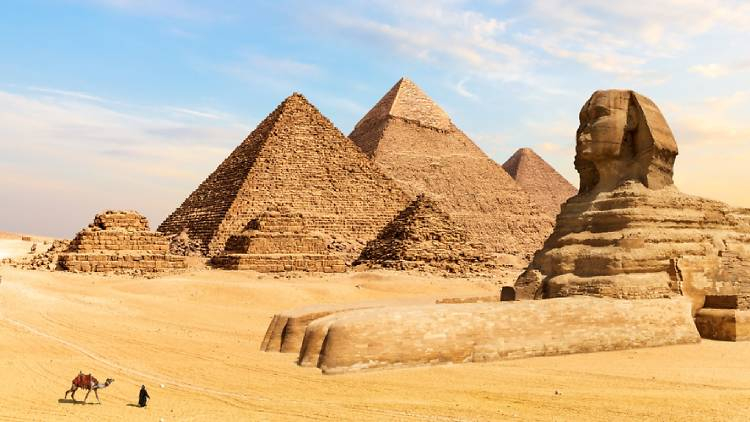The Great Pyramid of Giza, also known as the Pyramid of Khufu or the Pyramid of Cheops, is a massive ancient Egyptian pyramid located in Giza, Egypt. It is the oldest and largest of the three pyramids in the Giza Necropolis and is believed to have been built as a tomb for the pharaoh Khufu of the 4th dynasty, around 2560 BC.
The Great Pyramid is made of limestone and granite and stands at an original height of 147 meters (481 feet) making it the tallest structure in the world for more than 3,800 years. It was originally covered in a layer of polished white limestone that would have made it shine in the sun.
The pyramid is a testament to the ancient Egyptian's architectural and engineering abilities, it is considered one of the Seven Wonders of the Ancient World and the last remaining one. The pyramid was built using a combination of simple tools such as ramps and pulleys, and more complex techniques such as the use of a system of corridors and chambers to aid in the construction.
The pyramid is open to visitors and it is possible to go inside the pyramid and explore the chambers, although the pyramid is a tomb, it is not open to the public to enter the burial chamber. Today, the Great Pyramid of Giza is a UNESCO World Heritage Site and continues to be a major tourist attraction, drawing millions of visitors each year.





